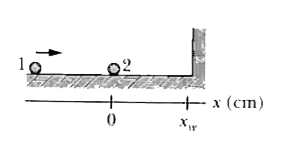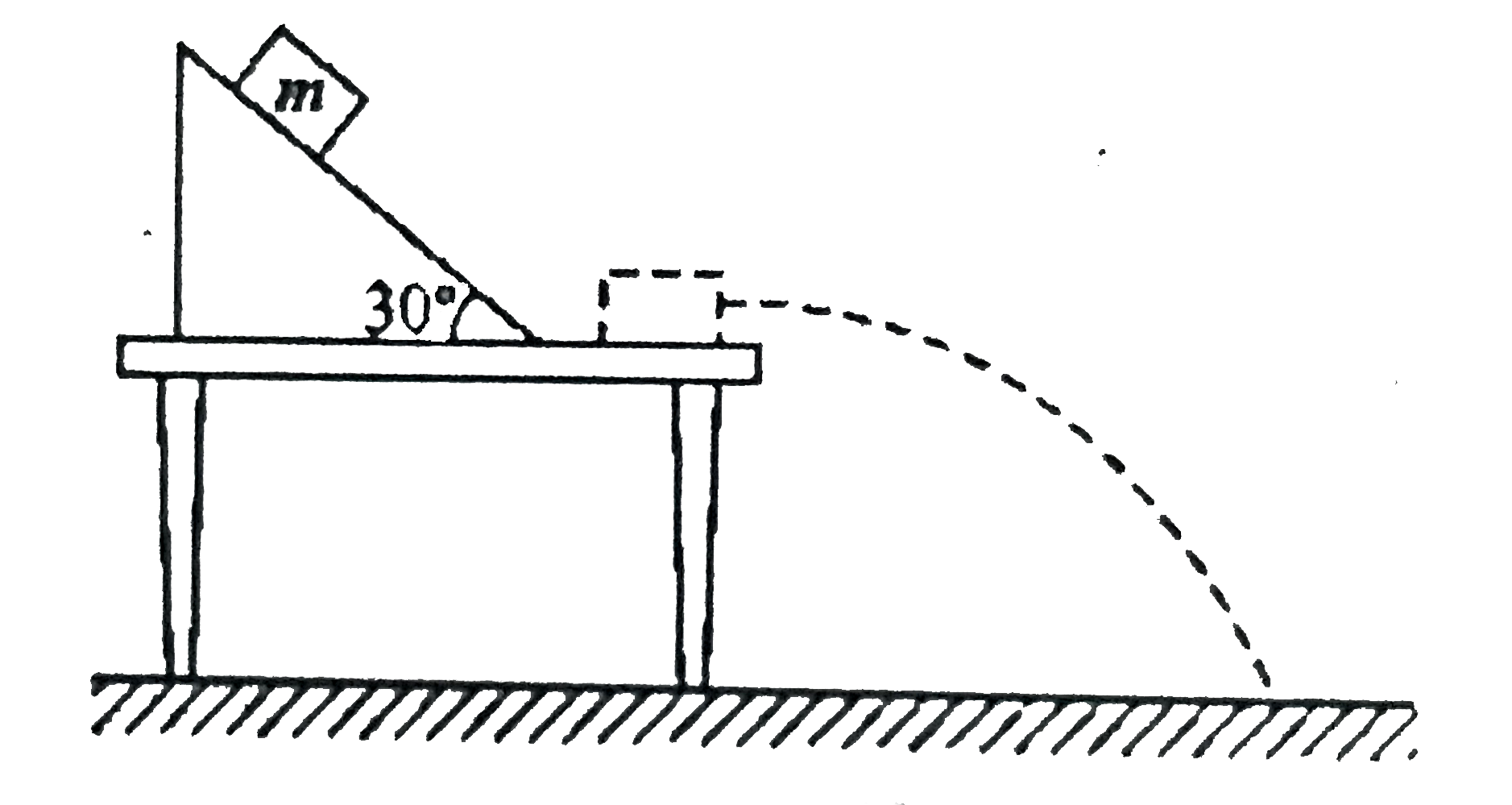In Fig. puck 1 of mass m1 = 0.25 kg is sent sliding across a frictionless lab bench, to undergo a one-dimensional elastic collision with stationary puck 2. Puck 2 then slides off the bench and lands a distance d from the base of the bench. Puck 1 rebounds from the collision and slides off the opposite edge of the bench, landing a distance 2d from the base of the bench. What is the mass of puck 2?

The correct Answer is:1.3 kg
Step by step video & image solution for In Fig. puck 1 of mass m_1 = 0.25 kg is sent sliding across a frictionless lab bench, to undergo a one-dimensional elastic collision with stationary puck 2. Puck 2 then slides off the bench and lands a distance d from the base of the bench. Puck 1 rebounds from the collision and slides off the opposite edge of the bench, landing a distance 2d from the base of the bench. What is the mass of puck 2? by Physics experts to help you in doubts & scoring excellent marks in Class 12 exams.
Topper's Solved these Questions
- BOOK - RESNICK AND HALLIDAYCHAPTER - CENTER OF MASS EXERCISE - Practice Questions (Single Correct Choice )47videos
CENTER OF MASS
- BOOK - RESNICK AND HALLIDAYCHAPTER - CENTER OF MASS EXERCISE - Practice Questions (More than One Correct Choice)5videos
CENTER OF MASS
- BOOK - RESNICK AND HALLIDAYCHAPTER - CENTER OF MASS EXERCISE - Practice Questions (Integer )4videos
CENTER OF MASS
- BOOK - RESNICK AND HALLIDAYCHAPTER - CAPACITANCEEXERCISE - PRACTICE QUESTION (INTEGER TYPE)3videos
CAPACITANCE
- BOOK - RESNICK AND HALLIDAYCHAPTER - CIRCUITSEXERCISE - Practice Questions (Integer Type)3videos
CIRCUITS
Similar Questions
In Fig., particle 1 of mass m1 = 0.30 kg slides rightward along an x axis on a frictionless floor with a speed of 2.0 m/s. When it a one-dimensional elastic collision with stationary particle 2 of mass m2 = 0.40 kg. When particle 2 then reaches a wall at xw = 70 cm, it bounces from the wall with no loss of speed. At what position on the x axis does particle 2 then collide with particle 1 ?
 View Solution
View SolutionBlock 1 of mass m1 slides along a frictionless floor and into a one-dimensional elastic collision with stationary block 2 of mass m2=3m1. Prior to the collision, the center of mass of the two block system had a speed of 3.00 m/s. Afterward, what are the speeds of (a) the center of mass and (b) block 2 ?
View Solution
Knowledge Check
- Question 1 - Select One
A ball of mass m1 makes an elastic , one-dimensional collision with a stationary particle of mass m2. The fraction of the kinetic energy of m1 transferred to m2 is
A2m1m2(m1+m2)2B4m1m2(m1+m2)2Cm1m2(m1+m2)2D12m12m2(m1+m2)2 - Question 2 - Select One
A particle of mass m1 makes an elastic, one-dimensional collision with a stationary particle of mass m2.What fraction of the kinetic energy of m1 is carried away by m2?
Am1m2Bm2m1C2m1m2(m1+m2)2D4m1m2(m1+m2)2 - Question 3 - Select One
A particle of mass m1 makes an elastic one dimensional collision with a stationary particle of mass m2.What fraction of the kinetic energy of m1 is carried away by m2?
Am1m2Bm2m1C2m1m2(m1+m2)2D4m1m2(m1+m2)2
Who occupied the back benches in the classroom on the day of the last lesson? Why?
View SolutionBlock 1, with mass m1 and speed 3.0 m/s, slides along an x axis on a frictionless floor and then undergoes a one dimensional elastic collision with stationary block 2, with mass m2=0.40m1. The two blocks then slide into a region where the coefficient of kinetic friction is 0.50, there they stop. How far into that region do (a) block 1 and (b) block 2 slide?
View SolutionA block m= 0.5kg slides down a frictionless inclined plane 2 m long as showi in figure-2.196. It then slides on a rough horizontal table surface of μ=0.3 for 0.5 m. It then leaves the top of the table,which is 1.0 m high. How far from the base of the table does the block land ?
 View Solution
View SolutionIn Fig. , block 1 of mass m1 slides from rest along a frictionless ramp from height h = 3.00 m and then collides with stationary block 2, which has mass m2=2.00m1. After the collision, block 2 slides into a region where the coefficient of kinetic friction μk is 0.450 and comes to a stop in distance d within that region. What is the value of distance d if the collision is (a) elastic and (b) completely inelastic?
 View Solution
View SolutionA particle of mass m1, makes a head on elastic collision with another stationary body of mass m2 If m1, rebounds with half of its original speed then (m1m2) is
View Solution

